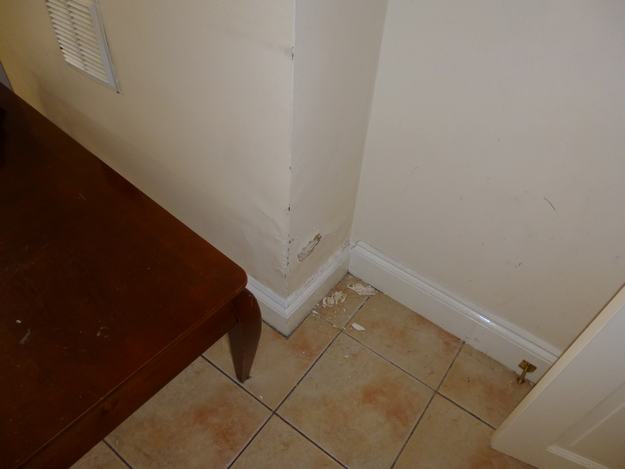Rising Damp – Common Property Defects #1
Friday, 10th April 2015
Common Property Defects | Surveying
Rising damp is often first noticed by homeowners when it materialises as distress within the plaster of internal walls, peeling and blistering of wall decorations, and sometimes signs of rot in skirting boards and other woodwork. In some cases dark staining and a tide mark type line is visible.
Rising damp occurs when masonry walls stand in water or saturated soil and lack any physical barrier, known as a damp proof course (DPC) to prevent the upward movement of that moisture. The Public Health Act 1885 introduced a requirement for the inclusion of DPCs in walls. Properties constructed before 1885 were often built without a DPC.

Early DPCs consisted of a layer of slate. In older properties, built on shallow foundations, movement within the walls will have often caused the slate DPC to fracture and become ineffective.
Alternatively it may be that the original DPC is intact but has been bridged by internal plaster, external render, raised ground levels or items such as rubbish or fuel stored against the external walls. To avoid bridging of the DPC anything piled against the external walls should be removed, external render should be cut off above the DPC and finished with a drip and external paving levels kept at least 150mm below the DPC. Where the existing paving is too high a cheaper alternative to lowering the surface would be the formation of a channel adjacent to the external walls which can be back filled with gravel (known as a French Drain).
Where the DPC is found to be defective or non-existent it will be necessary to consider installing a new DPC. There are two options; a physical DCP or a chemical injection DCP.
The installation of a chemical injection DCP involves holes being drilled into the masonry in a regular pattern, and a chemical substance, which is usually silicone based, being injected into the holes and allowed to spread to provide a moisture resistant barrier. The benefits of chemical injection are that it is less invasive, quicker, and generally cheaper than the installation of a physical DCP. However, chemical injection DCPs can be ineffective where moisture levels at the injection site are particularly high and/or the materials which constitute the wall are non-uniform. The injection of a chemical DPC will generally be accompanied by the replacement of the internal plaster with a water-proof render up to a height of 1m and it is often difficult to establish when later inspecting such walls whether it is the DPC or the water-proof render that is holding back the moisture.
Whilst more time consuming and expensive, the only certain way of introducing an effective DPC is to retro fit a physical membrane. Installation involves cutting through the full thickness of the wall, usually in lengths of approximately 1 metre, and inserting a membrane loaded with mortar, before filling the remaining gap with slate or plastic wedges to prevent settlement and back-filling the cut with mortar. The process is very disruptive and the presence of services channelled in to the wall provides a further challenge.
If you have concerns about damp in your property our team of Chartered Surveyors are on hand to assist. We can provide a bespoke report detailing the cause of the defect and suggesting appropriate remedial works. If you would like further information on the services we can provide please call us on 020 7183 2578 or send us an email.
